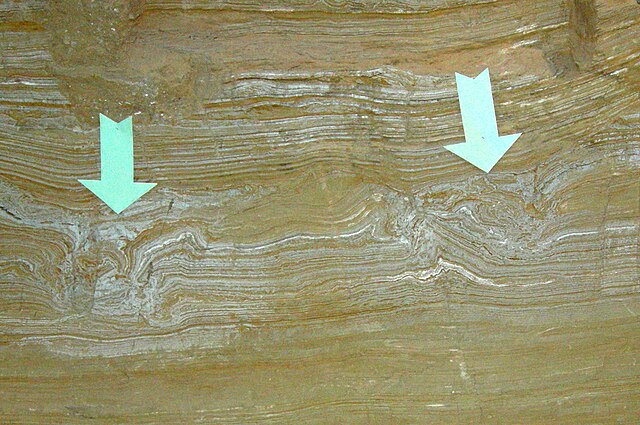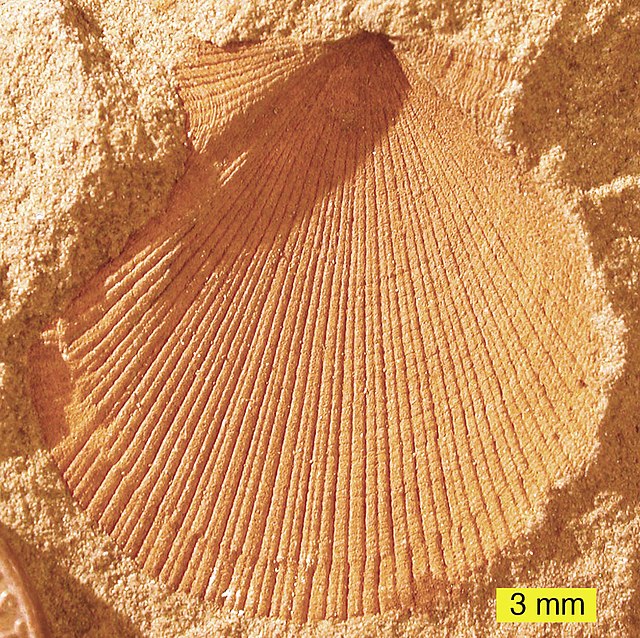A trace fossil, also known as an ichnofossil, is a fossil record of biological activity by lifeforms but not the preserved remains of the organism itself. Trace fossils contrast with body fossils, which are the fossilized remains of parts of organisms' bodies, usually altered by later chemical activity or mineralization. The study of such trace fossils is ichnology and is the work of ichnologists.
Chirotherium footprints in a Triassic sandstone
The trackway Protichnites from the Cambrian, Blackberry Hill, central Wisconsin
Cross-section of mammoth footprints at The Mammoth Site, Hot Springs, South Dakota
Mesolimulus walchi fossil and track, a rare example of tracks and the creature that made them fossilized together
A fossil is any preserved remains, impression, or trace of any once-living thing from a past geological age. Examples include bones, shells, exoskeletons, stone imprints of animals or microbes, objects preserved in amber, hair, petrified wood and DNA remnants. The totality of fossils is known as the fossil record.
Permineralized bryozoan from the Devonian of Wisconsin
External mold of a bivalve from the Logan Formation, Lower Carboniferous, Ohio
Silicified (replaced with silica) fossils from the Road Canyon Formation (Middle Permian of Texas)
Recrystallized scleractinian coral (aragonite to calcite) from the Jurassic of southern Israel








